“It is not enough to photograph the obviously picturesque.” Dorothea Lange, American photographer
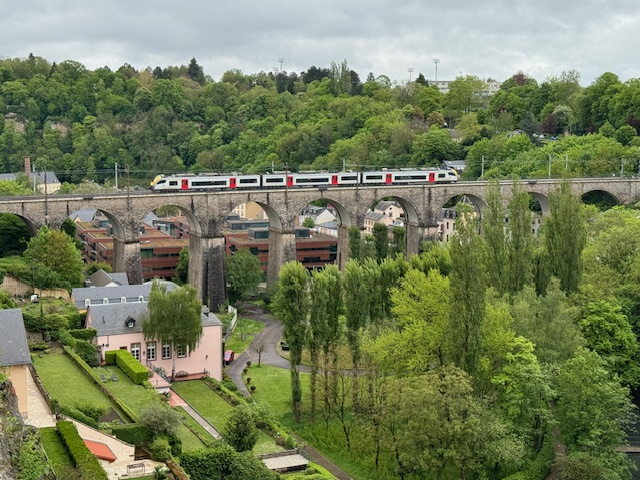
The Grand Duchy of Luxembourg
When I was growing up, the name Luxembourg always intrigued me. I can’t remember what made it so intriguing, but now, the time to visit came at long last. However, getting there was a bit of a challenge, as going from point A to point B wasn’t so easy. Luxembourg is tucked between Germany, Belgium and France and the whims of train service prevented easy, quick access.
For this on day, we had to switch between trains and buses, and back to trains and buses, in order to reach Luxembourg City; all due to repairs being made on the train tracks between Brussels and Luxembourg.
Once stepping off the final bus ride, I was immediately smitten with this picturesque, landlocked country, officially known as The Grand Duchy of Luxembourg, Europe’s seventh-smallest country, and with a population of 672,000. It’s part of Benelux … the intergovernmental cooperation agreement between Belgium, the Netherlands and Luxembourg.
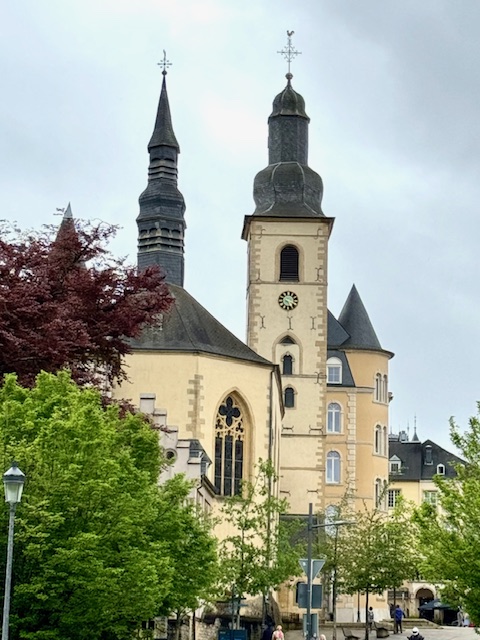

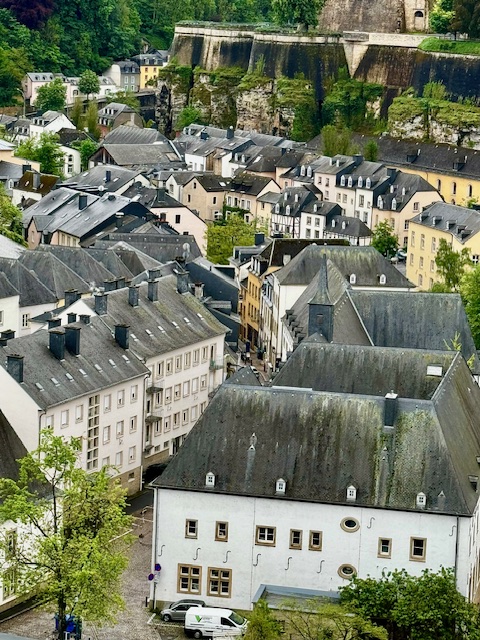
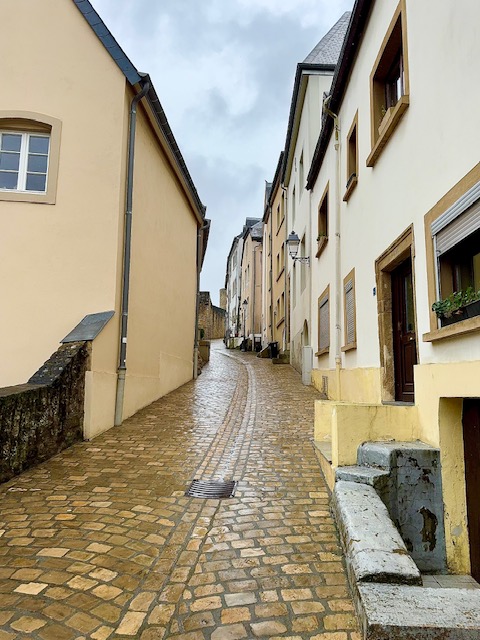
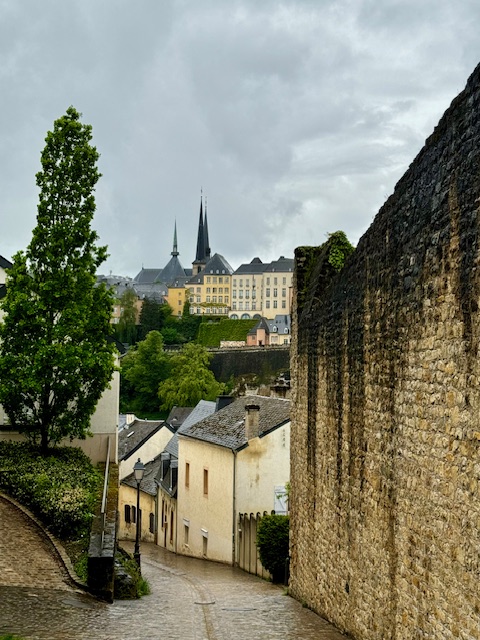
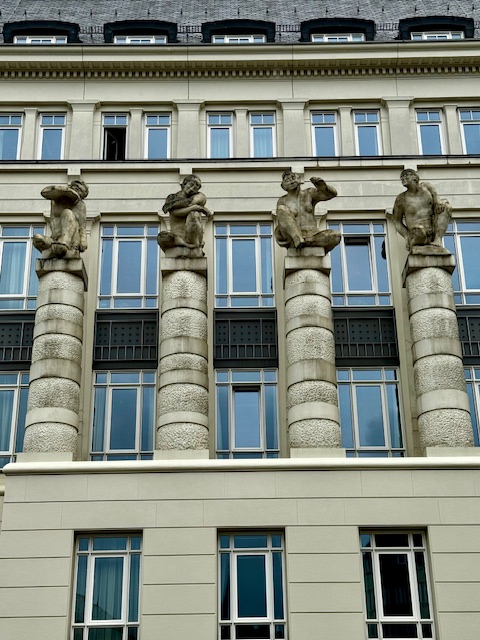

The history of Luxembourg is rich and complex, shaped by its strategic location and the interplay of various European powers over the centuries. Its beginnings trace back to the early Middle Ages, when a small fortress was built on the site of present-day Luxembourg City.
During the rise of prominence of The House of Luxembourg in the 13th century, it produced several Holy Roman Emperors, including Henry VII and Charles IV; expanding its territory and influence across Europe.
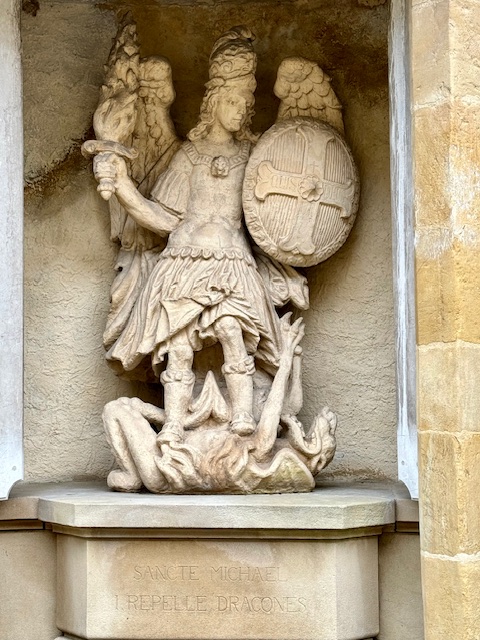
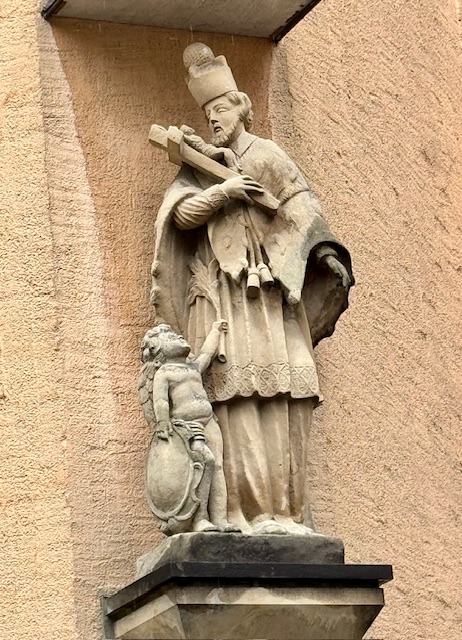

Over the next centuries, Luxembourg came under the rule of the Burgundian Netherlands, followed by the Habsburgs of Spain and Austria. In 1815, after the Napoleonic Wars, the Congress of Vienna established The Grand Duchy of Luxembourg, becoming a neutral territory; its borders further defined.
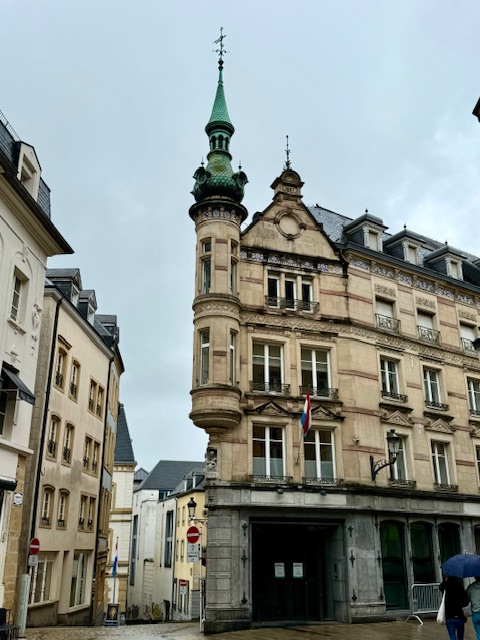
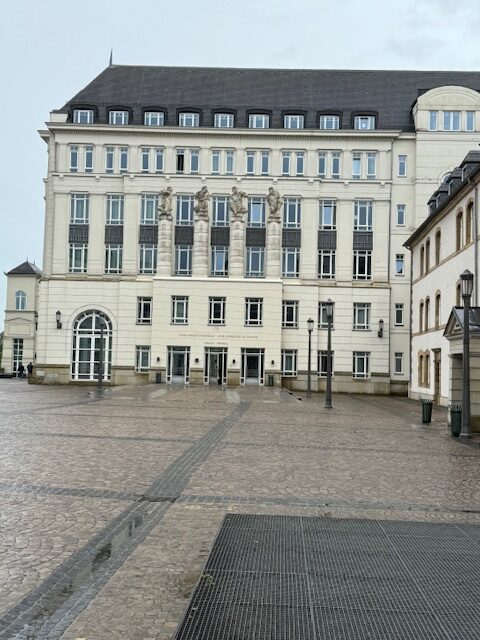
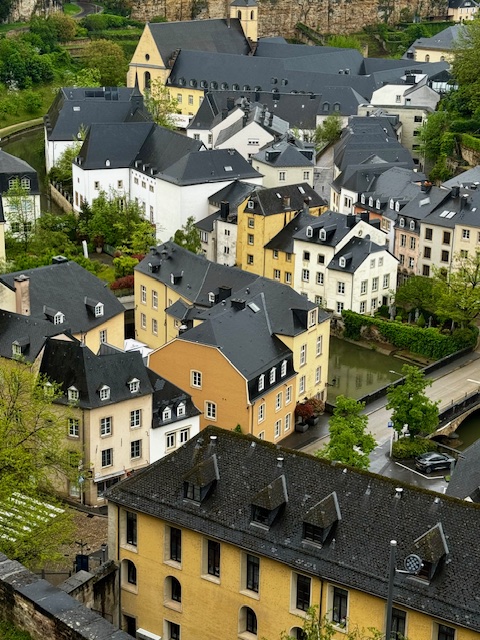
After World War II, Luxembourg became one of the founding members of the European Coal and Steel Community (ECSC) in 1951, which later evolved into the European Union (EU). Luxembourg City also became one of the EU’s administrative centers, hosting institutions such as the European Court of Justice and the European Investment Bank.
Today, Luxembourg is a prosperous and cosmopolitan country, known for its strong economy, high standard of living, and multicultural society. It’s also a major financial center and home to numerous international institutions. The country is multilingual, with Luxembourgish, French, and German as official languages, reflecting its historical ties to both France and Germany.
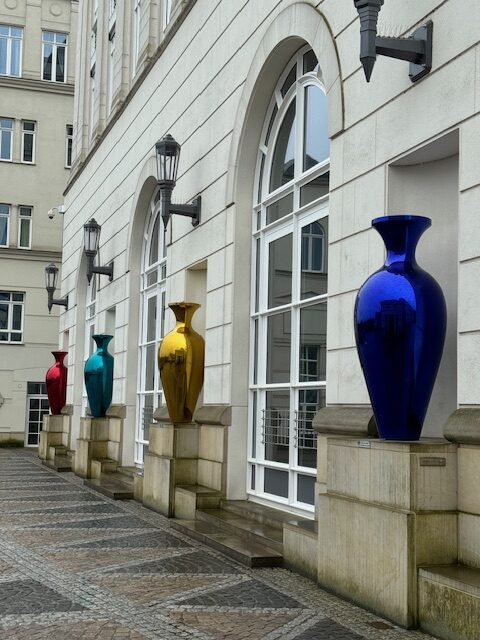
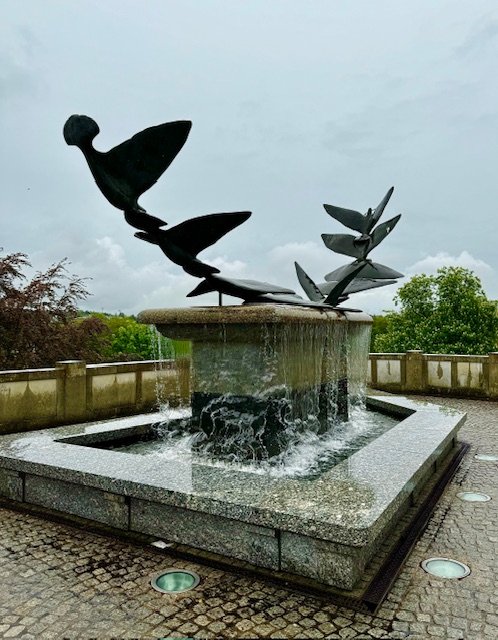
Luxembourg City is a charming and lovely storybook-like city with its narrow, medieval streets; one can roam and wander about; soaking up its history and natural beauty.
Notre-Dame Cathedral
A few steps from our hotel is Notre-Dame Cathedral, the Roman Catholic church of Luxembourg City. Its cornerstone was laid in 1613 and the church would become a noteworthy example of its late-Gothic architecture; also built with Renaissance elements and adornments.

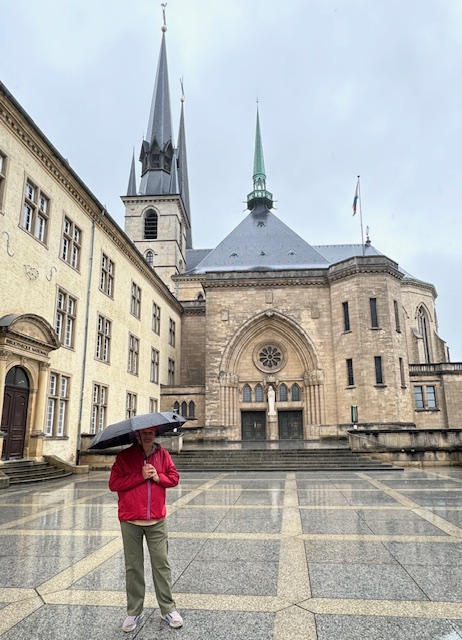
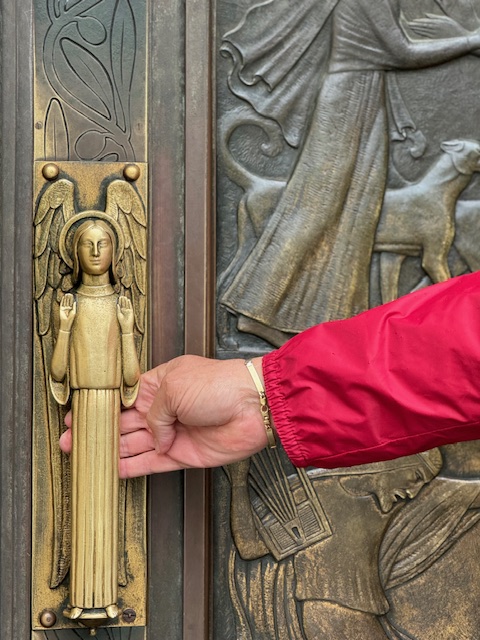
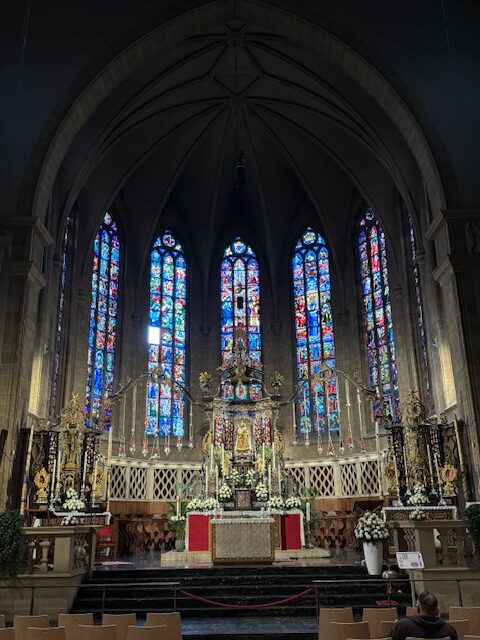
It was first consecrated as the Church of Our Lady and at the end of the 18th century, the church received the miraculous image of Our Lady of Consolation, the patron saint of both the city and the nation.
It was in 1870 that Pope Pius IX elevated its status to the Cathedral of Notre-Dame. Its crypt contains the remains of Grand Dukes and Grand Duchesses of Luxembourg.


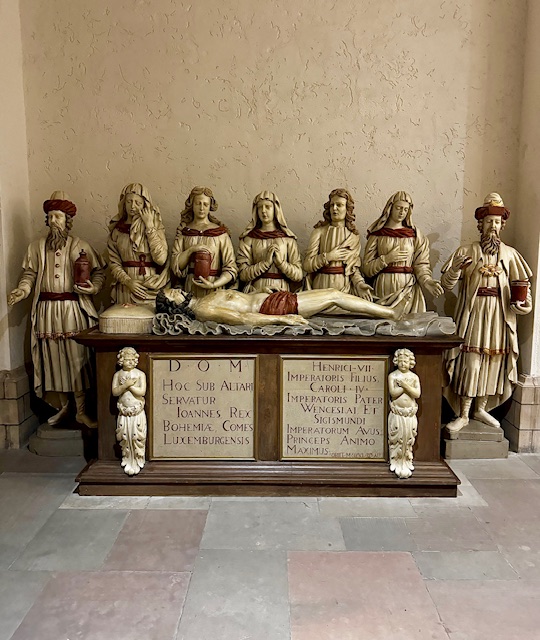

During this Sunday in May, we happened upon a procession of church groups celebrating the restoration of the statue of Our Lady of the Afflicted, which is a central object of veneration, and is housed in the cathedral. It’s often adorned with beautiful garments and crowns, especially during the Oktav Pilgrimage, in late April/early May.

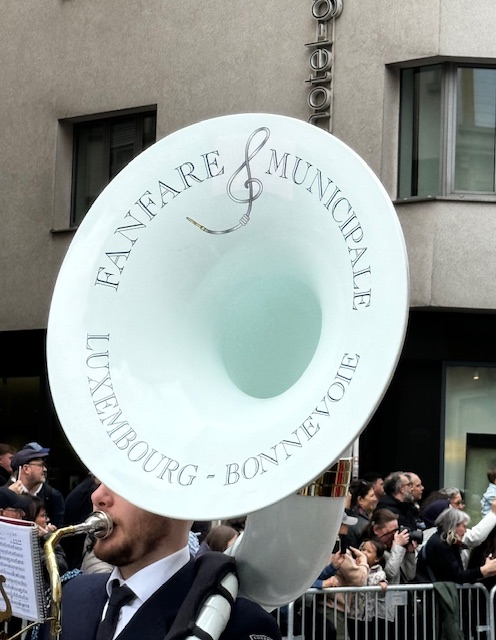

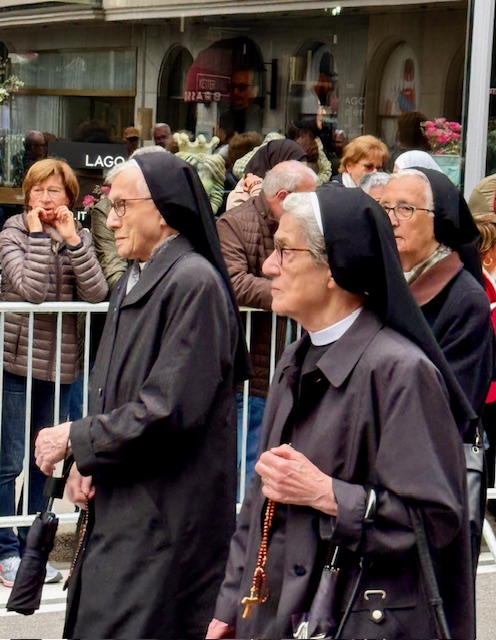
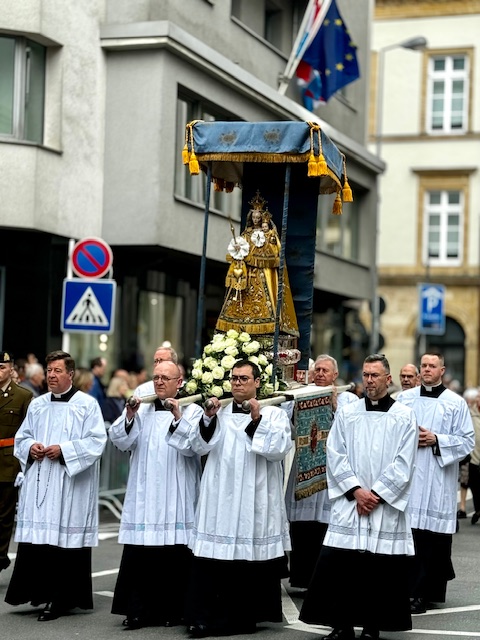
Grand Ducal Palace
The Grand Ducal Palace is the official residence of the Grand Duke of Luxembourg, and where he performs most of his duties as head of state of the Grand Duchy.
The building was first the city hall of Luxembourg from 1572 to 1795, and then the headquarters of the Luxembourg Government in 1817.
During the German occupation in the World War II, the Grand Ducal Palace was used by the Nazis as a concert hall and tavern. Much of the palace’s furniture, art collections and jewels were ruined or pilfered.
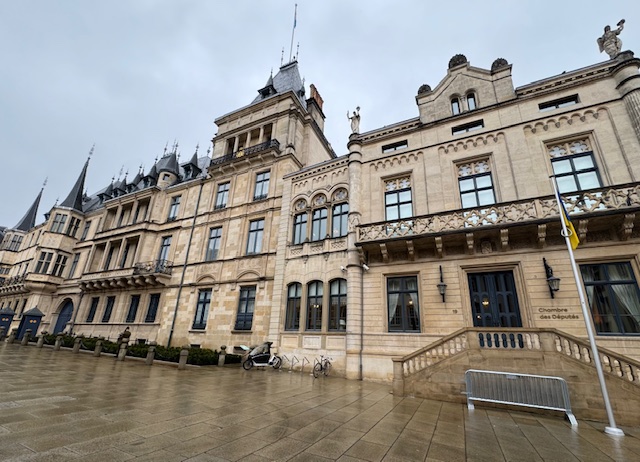

The palace was redecorated during the 1960s, and was thoroughly restored between 1991 and 1996. The interior of the Palace has been regularly renovated to match modern tastes and standards of comfort.
Sadly, it’s only open to visitors during the short summer months, but we watched a lonely guardsman performing his duty under a light morning rain.
Walking the nearly empty streets of the city, we came across a shop selling one of my favorite pastries, cinnamon rolls, artfully displayed in their street window, enticing me in to ponder which flavor(s) to consider.
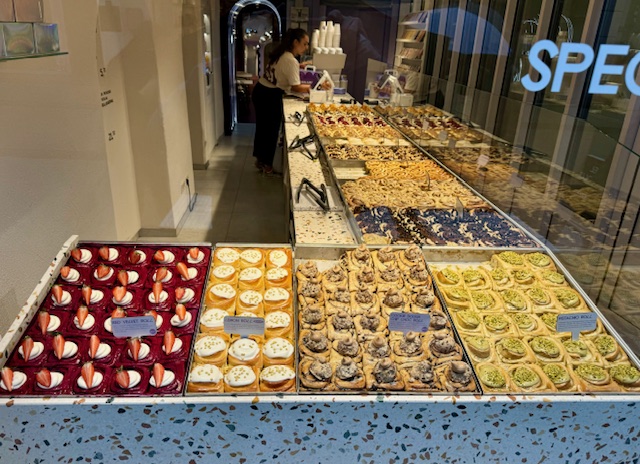
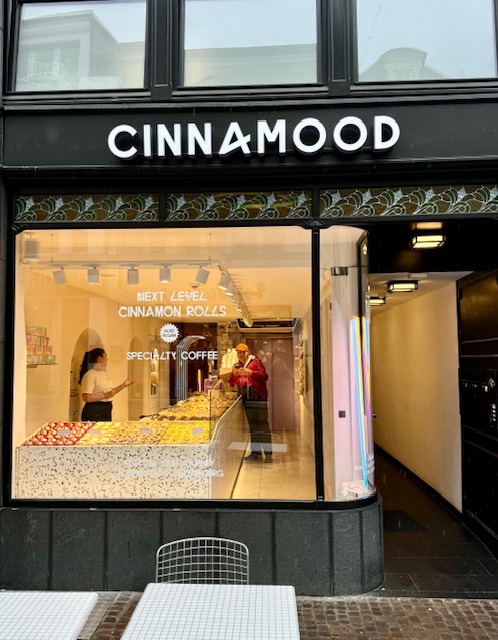
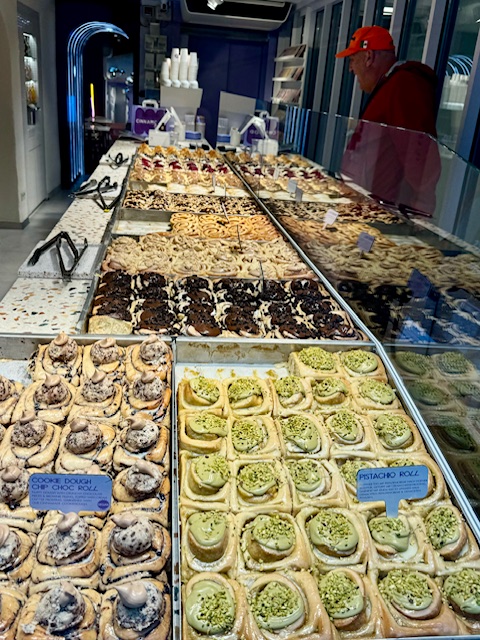
These were no ordinary cinnamon rolls; for this shop took them to the next level – from the classic purist’s version to lavishly garnished creations; choices included: Lemon, Oreo cookies, apple, pistachio, red velvet, salted caramel, black cherries, blueberries, blackberries and many more selections. Happily, I walked away with the classic and the Oreo, knowing that resistance is futile!
Continuing our afternoon stroll through the historic center in a light drizzle, nothing seemed more desirable than a cup of rich, hot chocolate. The Ladurée Tea Salon provided just such a cup. It’s a French-style tea room and luxury bakery Maison, created in 1862 in Paris. They’re now scattered across the world and fortunately for us, included Luxembourg City.
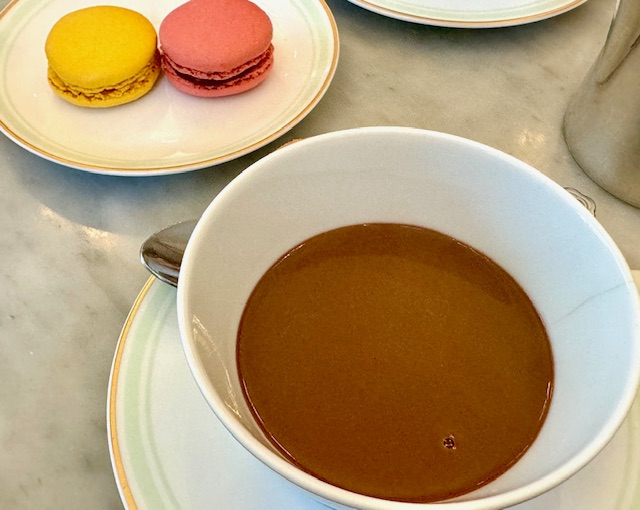
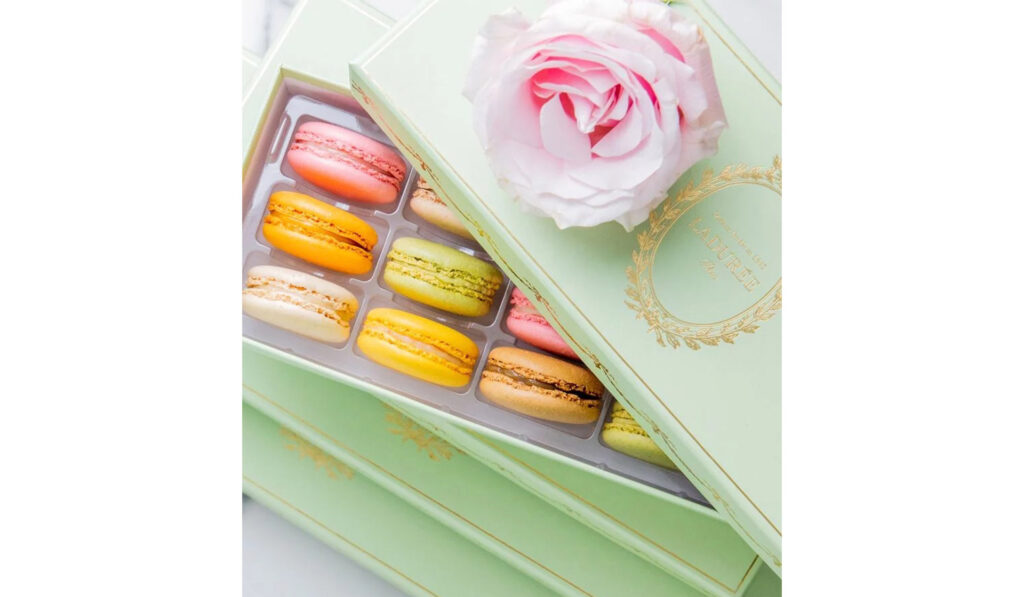
They’re mostly known for creating their iconic Macarons, which are available in a rainbow of colors; showcasing classic and seasonal flavors. As we sat there luxuriating with the comforts of the genteel salon, we saw them packaged up in beautiful gift boxes; delicious reminders of these sweet temptations.
The Kaddish Monument
The Kaddish Monument is part of the Memorial to the Victims of the Shoah, and was inaugurated on 17 June 2018. It commemorates the 1,300 members of the Jewish community of Luxembourg who were deported and exterminated by the Nazis. Its location is near where the first synagoue was built in 1823 and destroyed by the German invaders.
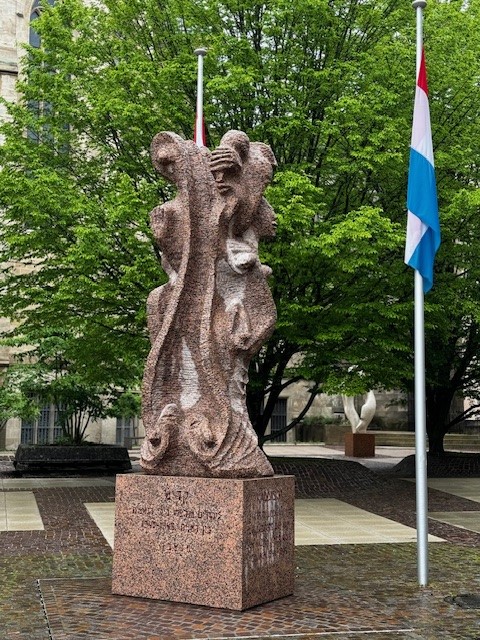
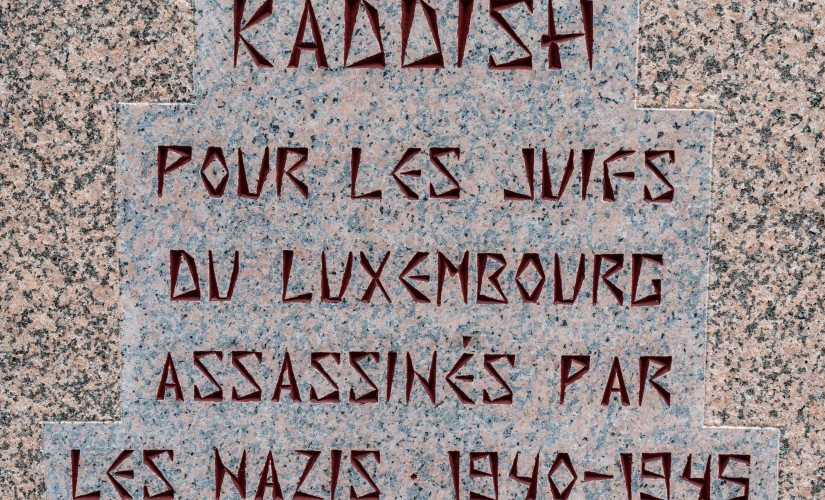
Golden Lady
From our top floor room, there’s a perfect view of the iconic Angel Monument of Luxembourg, or as it’s referred to – the Monument of Remembrance, aka the Gëlle Fra or the Golden Lady.
Lots of titles, but she’s gorgeous in gold, especially lit-up at night. She sits atop a 69’ tall granite column, and represents Nike, the goddess of victory, holding a laurel wreath, symbolizing triumph.
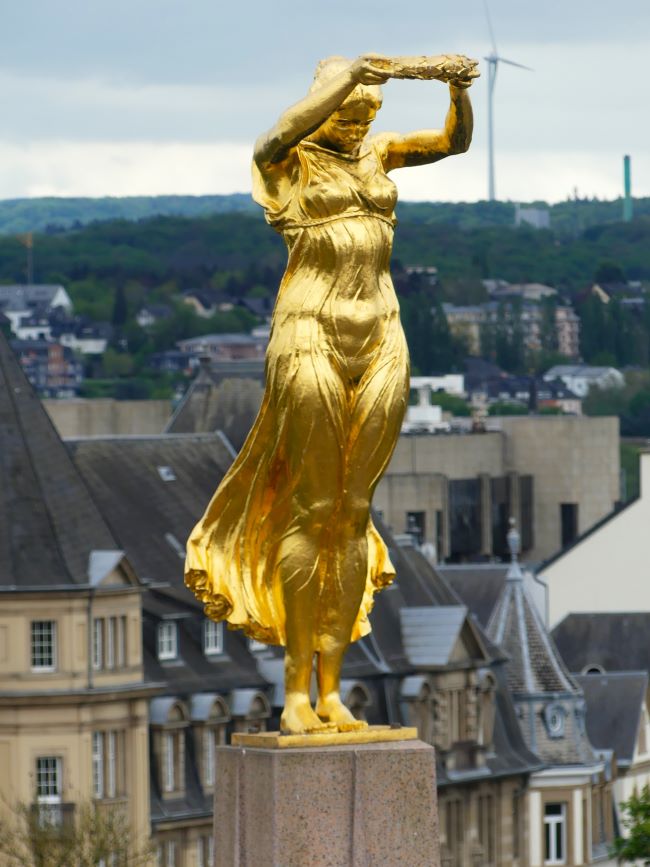
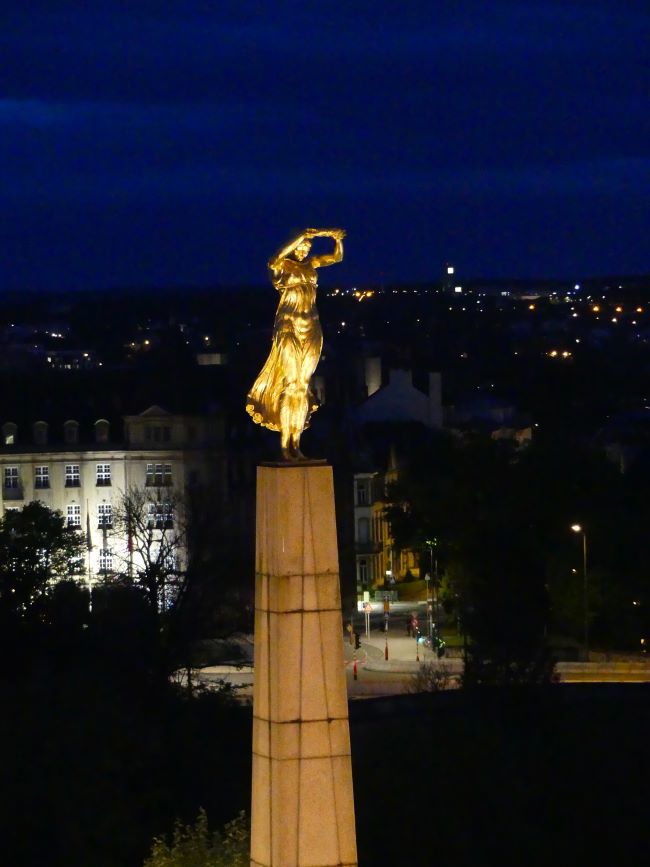
It was erected in 1923 to honor the Luxembourgers who volunteered for service in the armed forces during World War I and for those who died defending the country’s independence from Germany in 1866.
This iconic war memorial stands in Constitution Square (Place de la Constitution), and is a stone’s throw from our hotel. Day or night, it stands mightily over the cityscape and is the most recognizable landmark in the city.
When first arriving at our hotel, and glancing across the street at Constitution Square, we noticed a colorful carnival going on, and so we checked it out. It delighted us to discover a Kürtős stand. It’s a famous, festive treat – a traditional pastry made by the Hungarian population originating in Transylvania, Romania. These unusual, cone-shaped baked goods caught our fancy, wondering what the heck they were. The excitement built as we ordered our very first Kürtős in a coconut flavor.
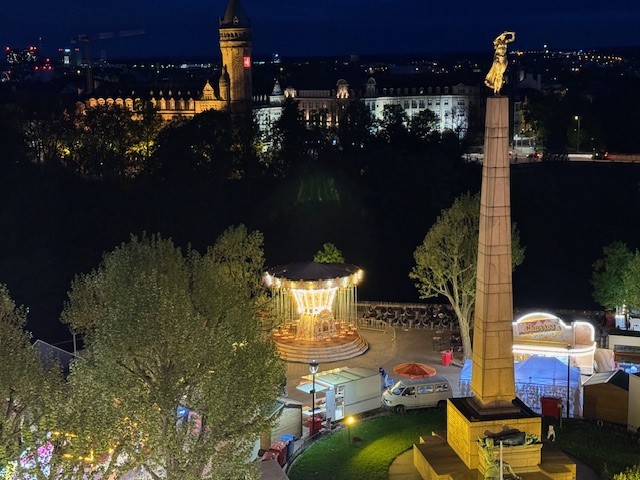
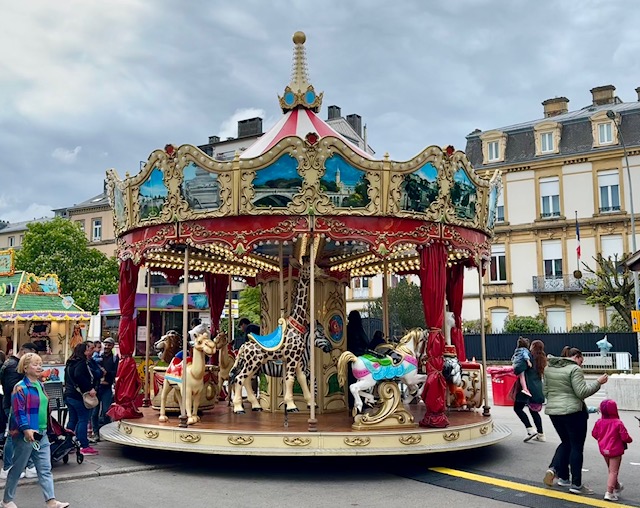
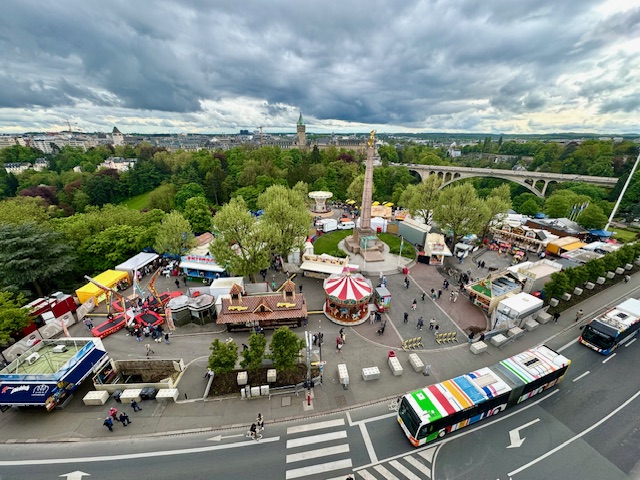
They’re made from a sweet, yeast dough of which a strip is spun and wrapped around a cone-shaped baking mold and then rolled in sugar; roasted over heat and basted with melted butter until browned and caramelized. O-M-Good! An unbelievably delicious, unique and incredible sweet treat. Sadly, the carnival closed down the following day and there went any future Kürtős for us. Ah, but the sweet memories!

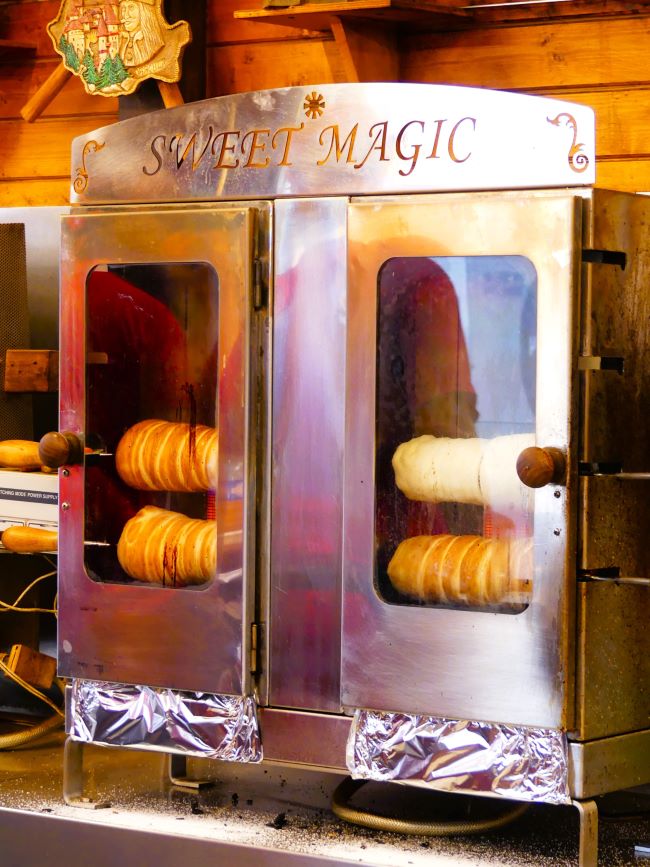


The Grund
My favorite part of walking about Luxembourg City was getting lost in the maze of streets comprising The Grund, a picturesque district located down in the Alzette River Valley. It’s known for its charming cobblestone streets, colorful old houses, and historic architecture. The Grund is one of the oldest parts of the city, with roots dating back to the medieval period. If you visit just one thing in Luxembourg City, this would be the place to wander about.
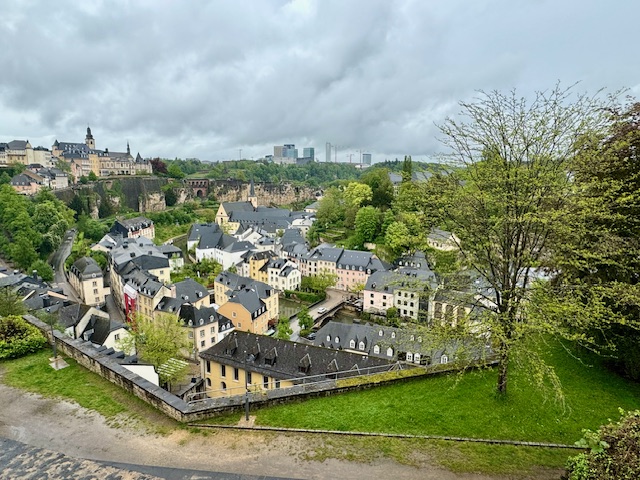

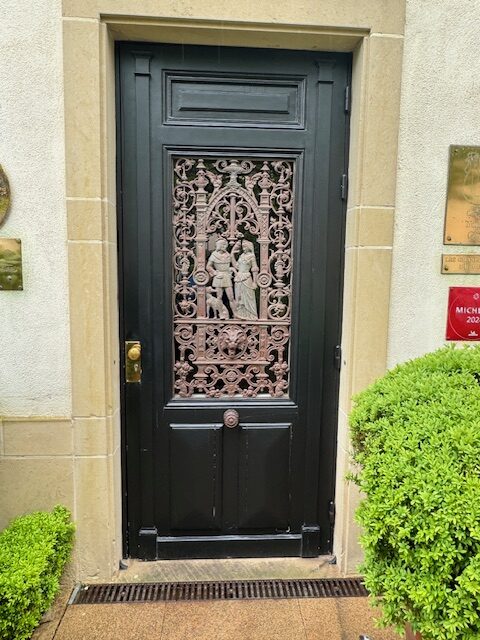
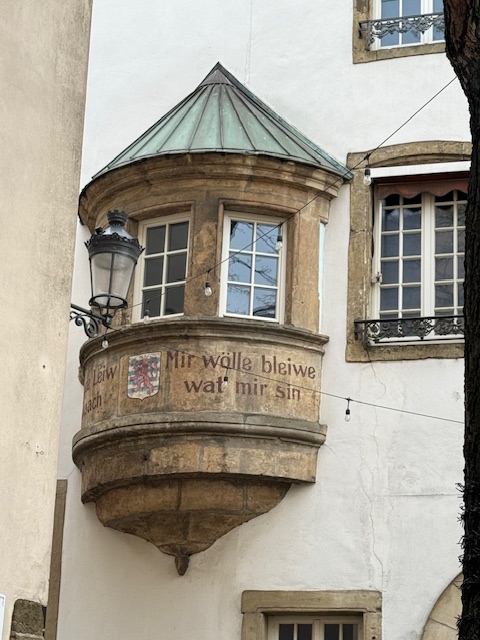
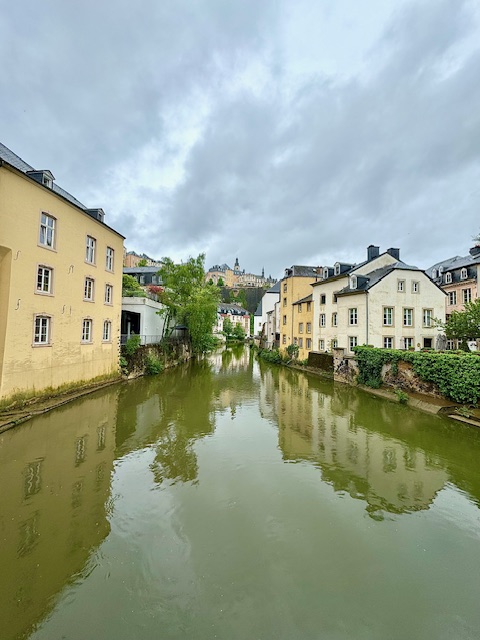
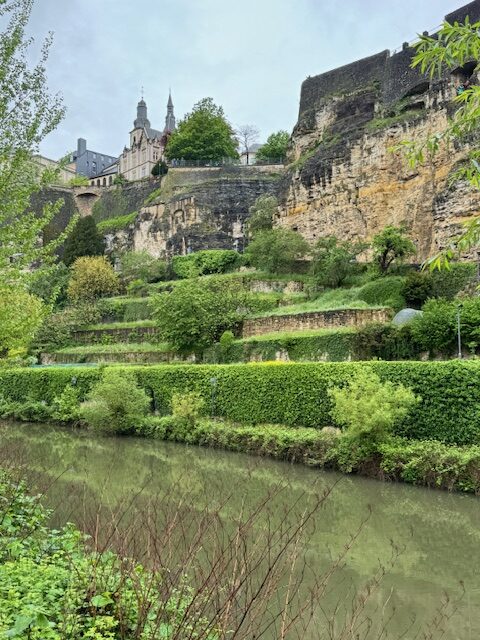
To get down into The Grund, you can take the stairs or the elevator; we chose the latter. Upon exiting through a long tunnel, we slowed-down to view an art exhibition of local students’ paper art pieces inspired by couture fashion designers.
Their creations showcased their unique interpretations of the designer’s signature dress looks. They were quite good and we were fascinated by each one and the finely detailed workmanship. Perhaps there’s a budding future designer or two amongst the bunch.
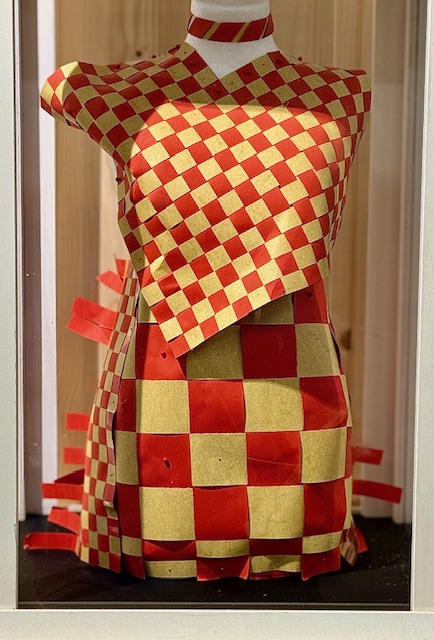
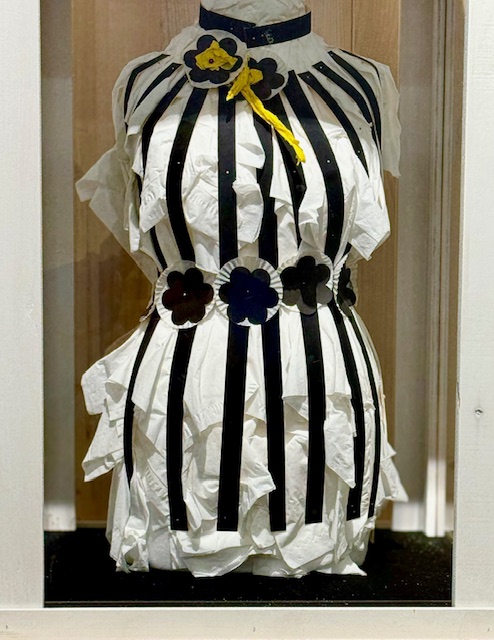
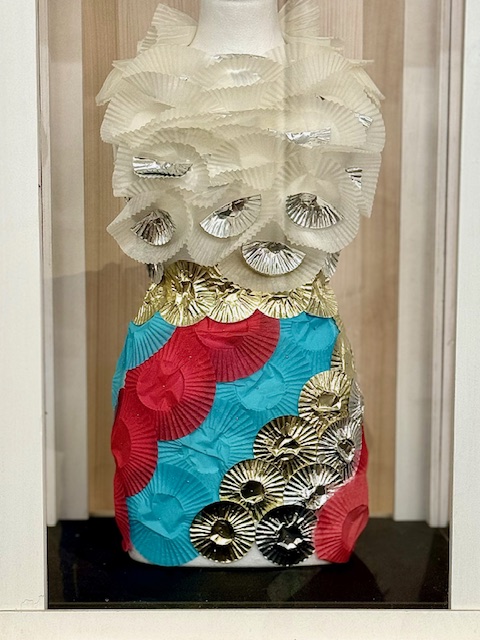
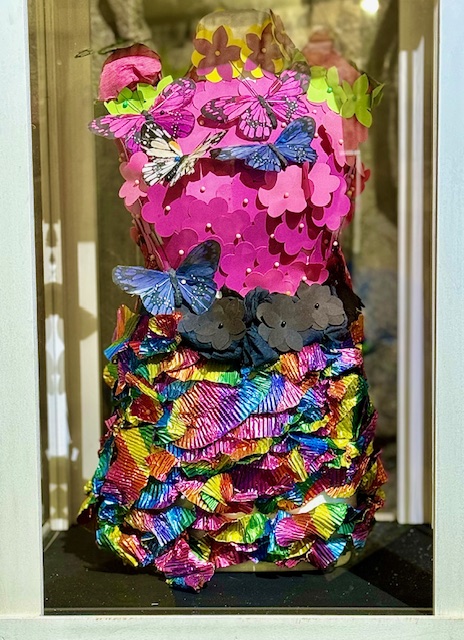
The Abbey of Neumünster is a former Benedictine abbey, dating back to the 17th century, and is now a cultural center hosting concerts, exhibitions, and other special events. We sat in one of its cafés and enjoyed a light lunch, followed by a walk along the banks of the Alzette River, offering scenic views of the Bock Casemates across the way.
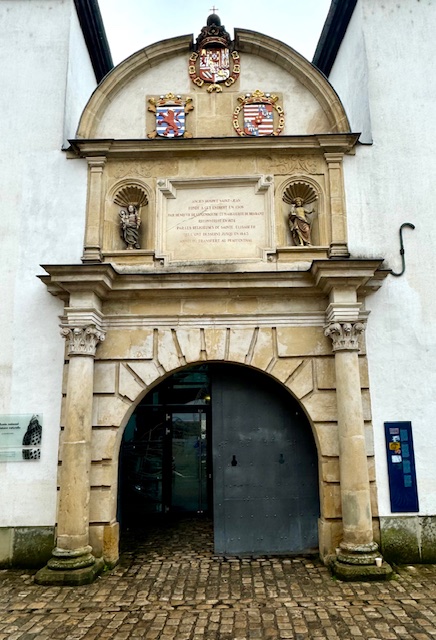

Overall, The Grund is a great place to explore, with its combination of historical landmarks, natural beauty, and vibrant culture; making it a favorite among visitors to Luxembourg City.
Food……

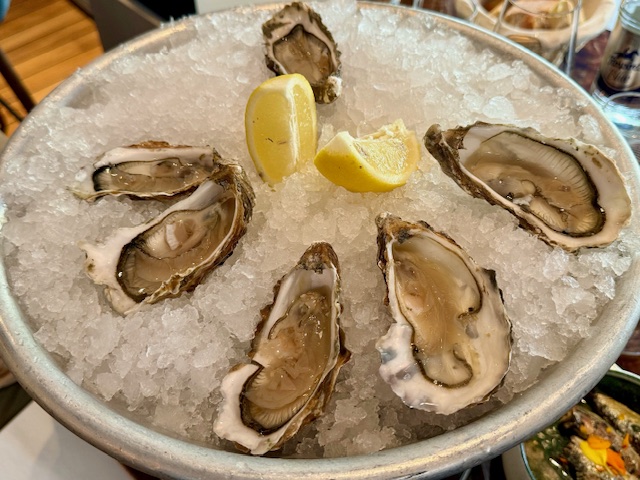

Whenever glancing over a restaurant’s menu and I’ll see any type of lamb featured, I look no further. But while dining at Ambrosia, a Greek restaurant, I was in total confusion with its many lamb dishes to choose from. I just couldn’t decide, but as the owner came to take our order, telling him of my quandary, he replied, “Let me select for you.”
So I anxiously awaited his selection and out came a wonderful surprise “package” … for what was presented was Kleftiko Lamb shank with tomato sauce, feta, peppers, olives, and rosemary that was slowly cooked and roasted in a paper bag! It was served with a side of small, baked potatoes.
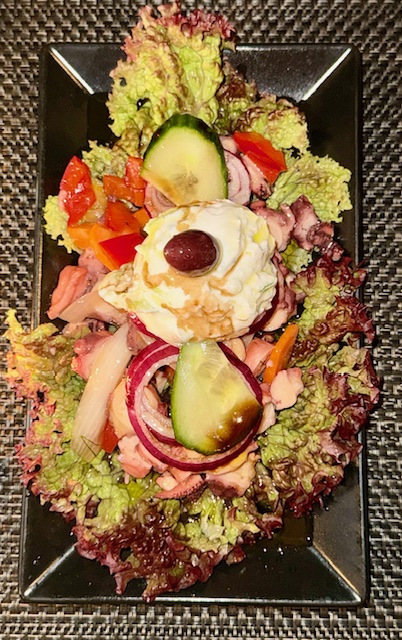

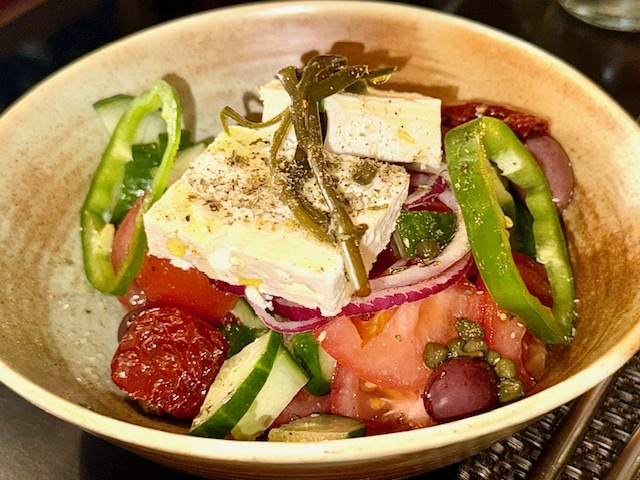

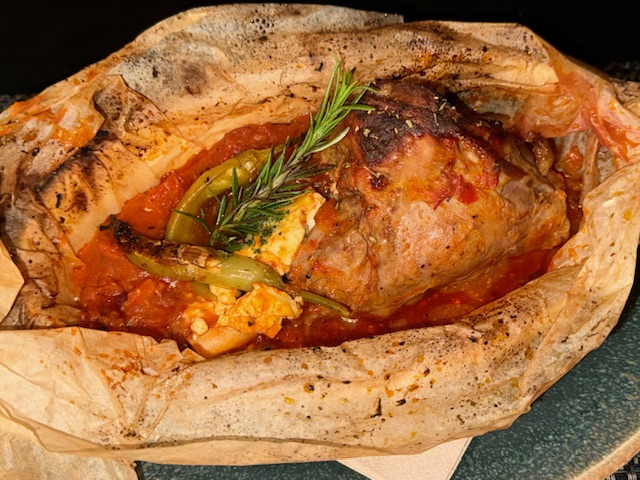
When I cut open the paper, out came rushing an aroma of pure Ambrosia (in Greek Mythology, it was the food or drink of the Greek gods). I savored every last bite, including soaking up all the juices left with some bread. I don’t know when I have enjoyed a lamb dish more. It was an exceptional meal and a fantastic ending to our visit to this charming Duchy.
As seen on the streets…..
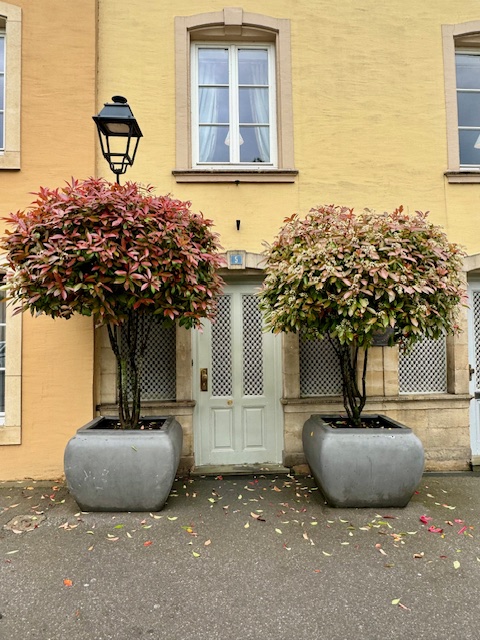
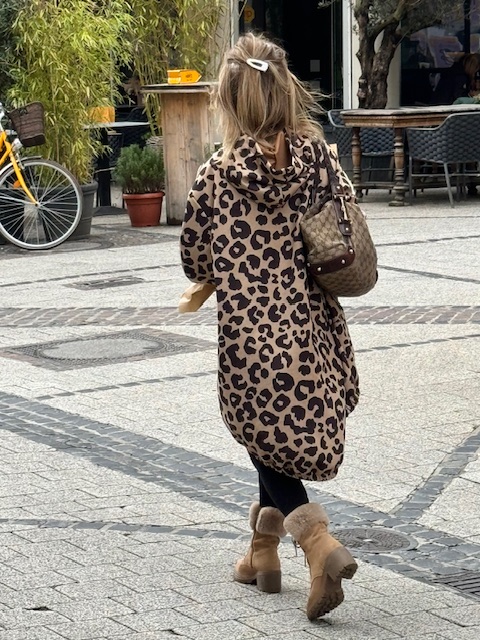
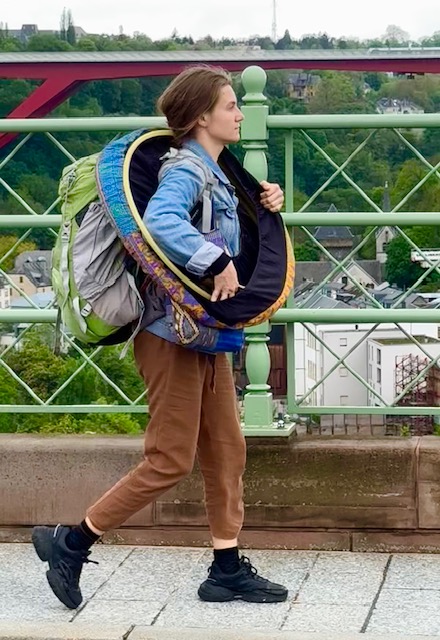

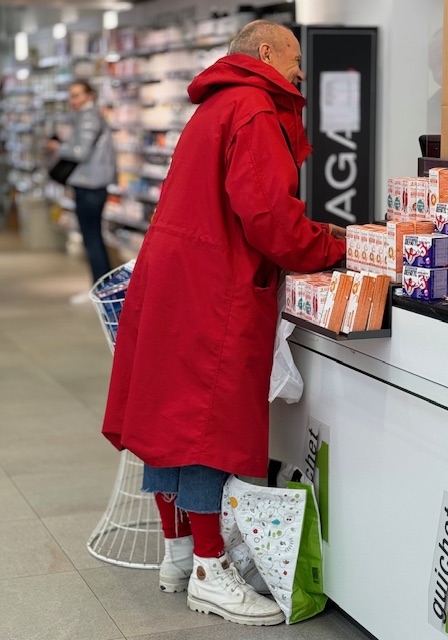
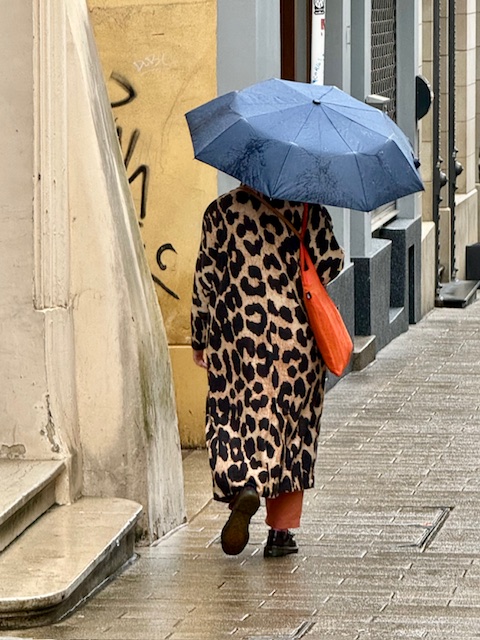
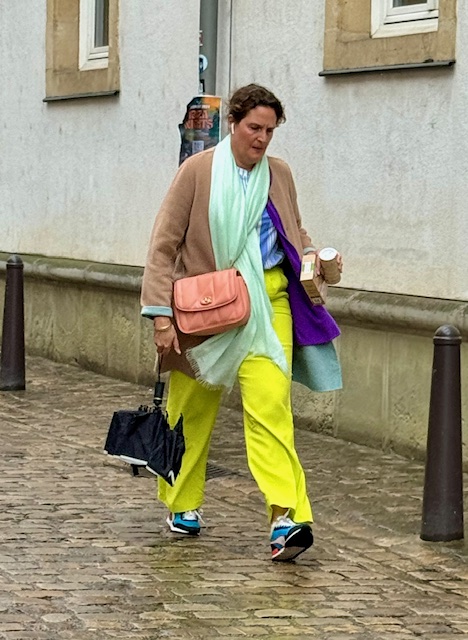
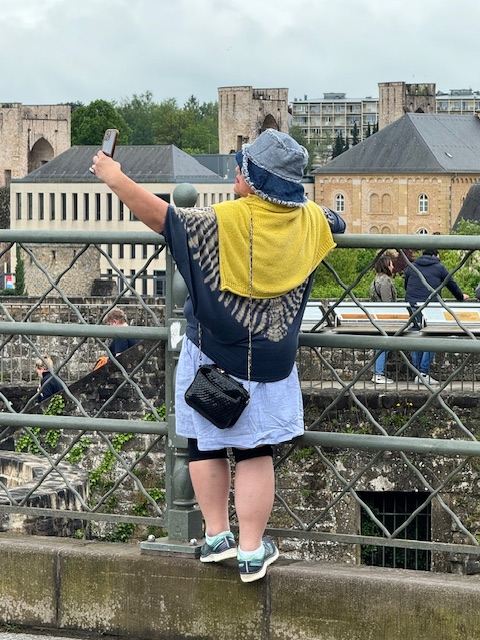

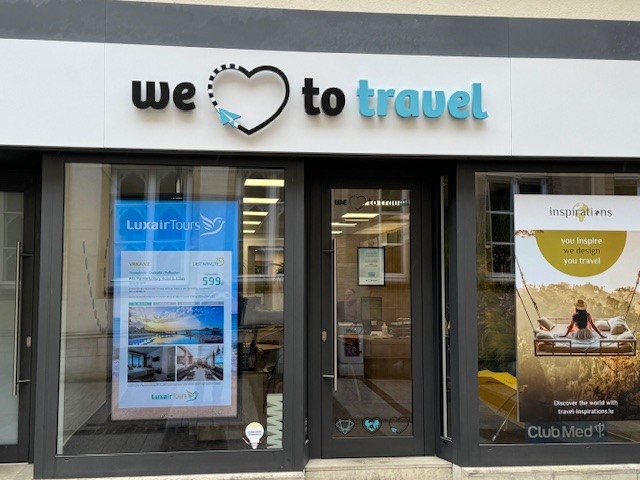
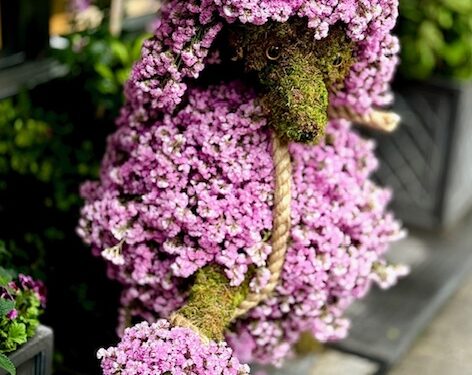


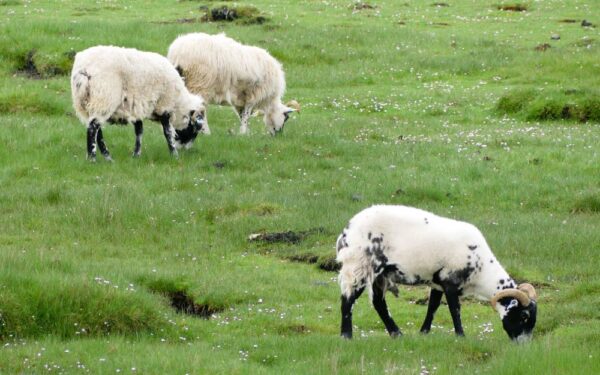
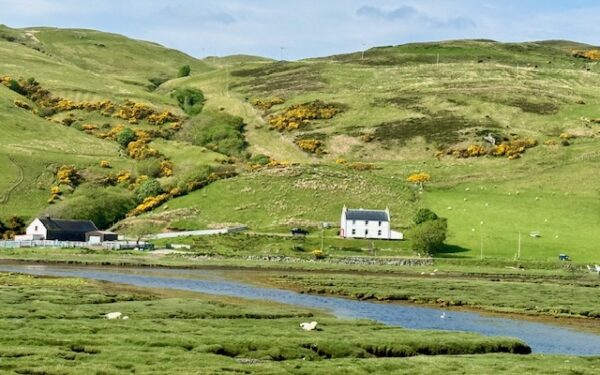
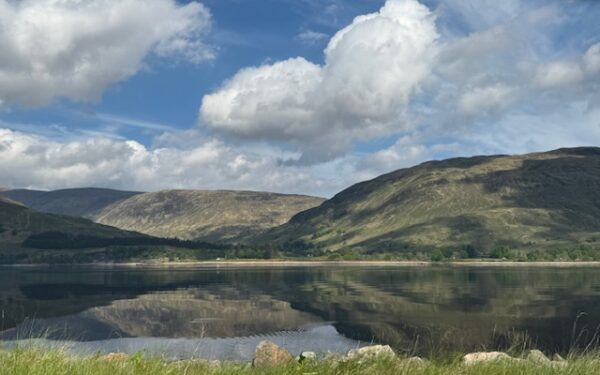
what a fascinating country! love you found a parade
I think it’s called a procession – but everyone loves a parade.
What an amazing trip!
The colorful street scenes and historic buildings are amazing! Great photos! The food sounds fabulous! My favorite thing was the various street people, tall and small, old and young, men and women – all bustling about in a beautiful setting! Thanks for sharing!
Thankyou so much for sharing your trip! This 82 year old will never get to the wonderful places that you and David have seen, but the education and beauty is beautifully done! Thankyou!!
Did you see one bit of litter in the entire city? It looks immaculate.
Luxembourg City:
A sliver of a glimpse of Luxembourg City, reflected in the River Alzette, makes me want to book the next flight. Also commission a painting. The descriptive word “charming” is so overused, but seems the perfect description of this picturesque city. Of course, what could possibly be wrong with a place featuring every kind of cinnamon roll under the sun in one of its bakeries?
Kaddish Monument:
A single glance is all that’s needed to understand that this monument is of great significance. Without even knowing who or what this monument honors, it is at once arresting, thought provoking, horrific. 1300 Jewish lives lost in the blink of an eye. Lest we forget, monuments like The Kiddish are important reminders we must not let history repeat itself.
Students’ Paper Art:
Talented art students. Eye catching Couture Fashion Exhibit entirely of paper.
As Seen …
If fashion is any indication, Luxembourg is inhabited by people who know how to march to their very own drummer!